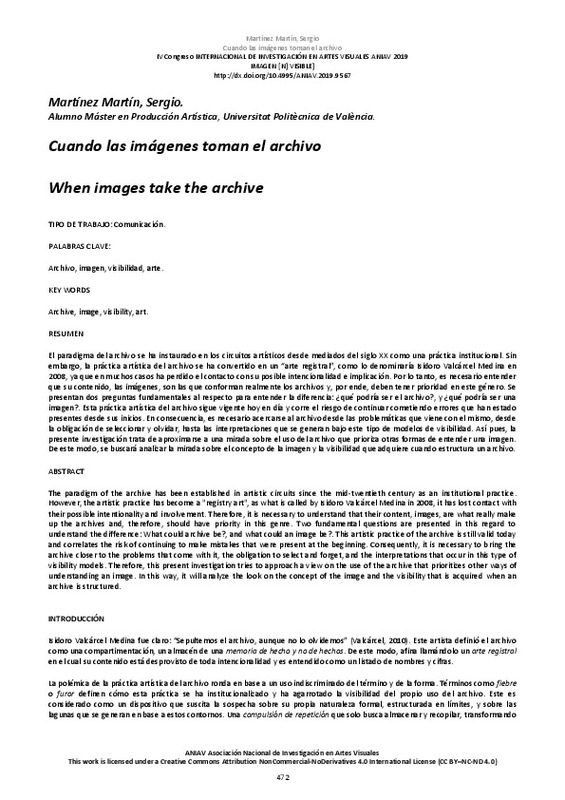JavaScript is disabled for your browser. Some features of this site may not work without it.
Buscar en RiuNet
Listar
Mi cuenta
Estadísticas
Ayuda RiuNet
Admin. UPV
Cuando las imágenes toman el archivo
Mostrar el registro completo del ítem
Martínez Martín, S. (2019). Cuando las imágenes toman el archivo. En IV Congreso Internacional de investigación en artes visuales: ANIAV 2019 Imagen [N] visible. Editorial Universitat Politècnica de València. 472-476. https://doi.org/10.4995/ANIAV2019.2019.9567
Por favor, use este identificador para citar o enlazar este ítem: http://hdl.handle.net/10251/128754
Ficheros en el ítem
Metadatos del ítem
| Título: | Cuando las imágenes toman el archivo | |
| Otro titulo: |
|
|
| Autor: | ||
| Entidad UPV: |
|
|
| Fecha difusión: |
|
|
| Resumen: |
[ES] El paradigma del archivo se ha instaurado en los circuitos artísticos desde mediados del siglo XX como una práctica institucional. Sin
embargo, la práctica artística del archivo se ha convertido en un “arte registral”, ...[+]
[EN] The paradigm of the archive has been established in artistic circuits since the mid-twentieth century as an institutional practice.
However, the artistic practice has become a "registry art", as what is called by ...[+]
|
|
| Palabras clave: |
|
|
| Derechos de uso: | Reconocimiento - No comercial - Sin obra derivada (by-nc-nd) | |
| ISBN: |
|
|
| Fuente: |
|
|
| DOI: |
|
|
| Editorial: |
|
|
| Versión del editor: | http://ocs.editorial.upv.es/index.php/ANIAV/ANIAV2019/paper/view/9567 | |
| Título del congreso: |
|
|
| Lugar del congreso: |
|
|
| Fecha congreso: |
|
|
| Tipo: |
|









